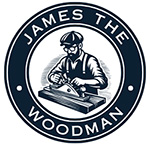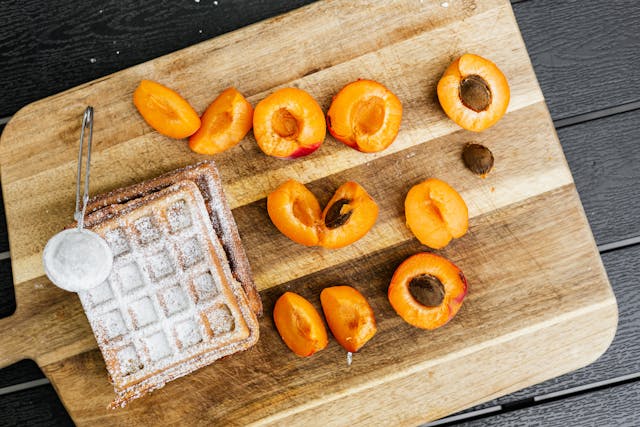Wooden cutting boards are not just practical tools in the kitchen—they are pieces of craftsmanship, rich in beauty, texture, and history. With regular use, many people begin to notice knife marks and fine cuts on the surface of their wooden boards. This naturally raises the question: Are these knife marks bad for your board or your health? The short answer is no—these marks are not only normal but part of what makes a wooden cutting board age gracefully. In this article, we explore the science and aesthetics behind knife marks on wooden cutting boards and how to maintain their hygiene, durability, and beauty over time.
1. Knife Marks Are Normal and Expected
Every time you slice, chop, or dice, your knife makes contact with the board. Over time, this leaves behind fine lines, grooves, and cuts—especially in well-used areas. These marks are not signs of damage or wear and tear that should be feared. Rather, they are a natural and inevitable part of using a wooden cutting board.
High-quality wooden boards, especially those made of hardwoods like maple or walnut, are designed to withstand repeated use. Unlike plastic boards that may chip or gouge, wood absorbs these cuts and responds in a much more organic way. The resulting pattern of marks becomes part of the board’s character and tells the story of many meals prepared with care.
2. Aged Boards Develop Beauty and Character
There’s a reason chefs and home cooks alike cherish old cutting boards. A board that has been used and cared for properly will develop a patina over time—an aged, worn look that speaks to years of experience in the kitchen. The knife marks and scratches begin to blend together, softening the appearance of the surface and creating a board that is visually rich and full of personality.
Much like a well-used cast iron pan or a leather apron, a scarred wooden board is not a flaw—it’s a badge of honour. It’s a testament to meals cooked, ingredients prepped, and stories shared around the dinner table.
3. The Science: Wooden Fibres Naturally Seal Off Bacteria
One of the most common concerns regarding knife marks is the possibility of germs or bacteria getting trapped inside the cuts. While this is a valid concern for some surfaces, wood behaves very differently from plastic or other synthetic materials.
Scientific studies have shown that hardwood cutting boards possess natural antimicrobial properties. When a knife slices into the wood, the fibers are disturbed, but not destroyed. Over time, these fibers naturally swell and “close over”, effectively sealing the groove and isolating any bacteria. Inside this sealed-off space, bacteria cannot survive long—studies have found that most microbes die off relatively quickly once absorbed into the wood.
This natural self-healing property is a unique advantage of wooden boards, making them a safe and hygienic option for most food preparation tasks.
4. Proper Cleaning and Drying Are Still Essential
While the wood helps manage bacteria on its own, regular cleaning is still essential to keep your board sanitary. After each use, especially if you’ve been working with juicy fruits, raw meats, or pungent foods like garlic or onions, wash your board promptly with warm, soapy water. Avoid soaking the board or placing it in the dishwasher.
Dry the board thoroughly with a towel and then stand it up or store it in a way that allows air to circulate. Trapped moisture is one of the few threats to a wooden board, as it can lead to warping or mold over time.
By pairing the board’s natural antibacterial behavior with mindful care, you’ll ensure that knife marks never pose a health hazard.
5. Occasional Maintenance Keeps the Surface Smooth
Even though knife marks are harmless, some people prefer a smoother surface—especially for aesthetic or tactile reasons. Over time, if the surface begins to feel rough or if there are deeper cuts forming, you can lightly sand the board using fine-grit sandpaper. This removes surface inconsistencies and helps refresh the board’s appearance.
After sanding, it’s essential to recondition the wood with food-safe mineral oil or a beeswax-based conditioner. This not only restores moisture to the board but also adds a protective layer that resists future water absorption and enhances the board’s rich color and grain.
6. Embrace the Story Your Board Tells
Every mark on your cutting board tells a story—of meals prepared with love, of knife skills honed over time, of traditions passed down in the kitchen. These marks are not just evidence of use—they’re symbols of a board well-loved and well-used.
Rather than viewing knife marks as a problem to fix, try embracing them as part of the board’s life. Each scratch is a reminder of past dishes and future meals. Much like wrinkles on a face or scuffs on a favourite pair of boots, these imperfections add charm and authenticity.
7. When to Replace a Board: Signs of Structural Damage
While knife marks are no cause for alarm, there are some signs that indicate a board may be nearing the end of its useful life. If your wooden cutting board begins to crack deeply, split, or develop areas that feel soft or spongy, it may no longer be safe for food preparation. Deep cracks can trap food particles and moisture in places that even thorough cleaning can’t reach.
In these cases, it’s best to retire the board or repurpose it for non-food uses, such as a serving platter or rustic kitchen decor. High-quality boards, especially those made from hardwoods and maintained regularly, can last for many years or even decades before replacement becomes necessary.
Conclusion
Knife marks on a wooden cutting board are not a flaw—they are a feature. These fine lines are signs of a board doing exactly what it’s meant to do: help you prepare meals safely and effectively. Far from compromising hygiene, wooden boards naturally combat bacteria thanks to their fiber structure and antimicrobial properties. With proper cleaning, occasional oiling, and an appreciation for their evolving look, your board will only become more beautiful and functional with age.
So next time you spot a new scratch on your board, take pride in it. That mark is part of your board’s story—and yours. A well-used wooden cutting board isn’t just a tool. It’s a companion on your culinary journey.

